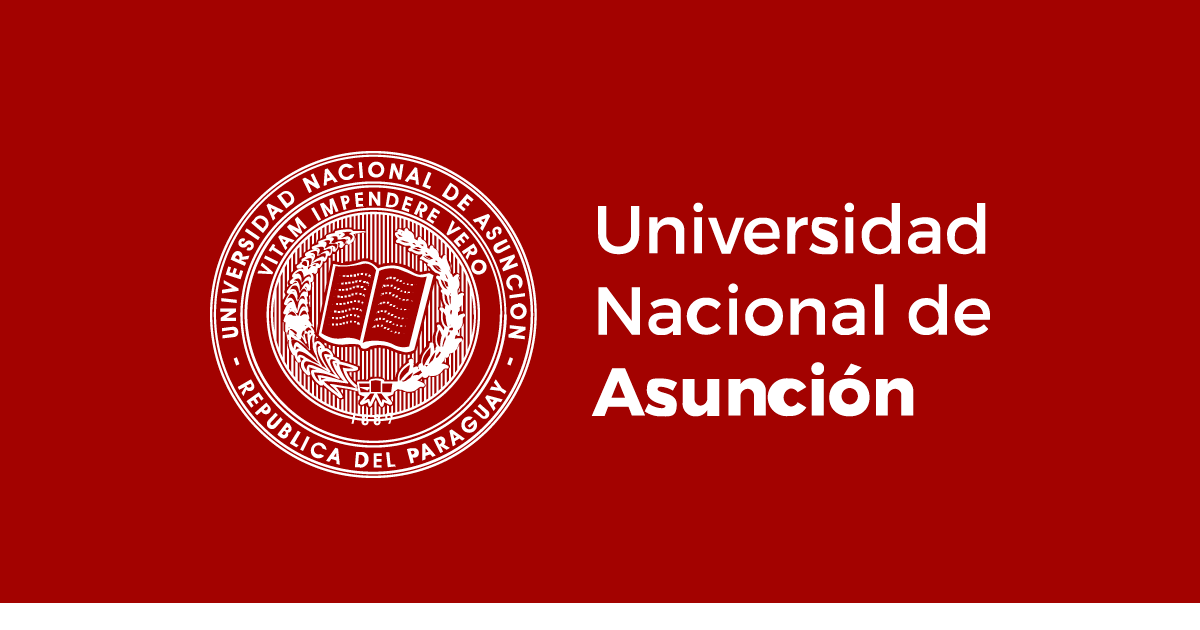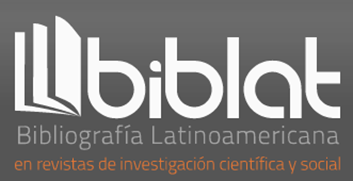Preliminary evaluation of the antimicrobial effect and acute toxicity of the ethanolic extract of Luehea divaricata (Ka’a ovetĩ)
DOI:
https://doi.org/10.47133/IEUNA2028Keywords:
Daphnia magna, antibacterial, antifungal, bioassay, low toxicityAbstract
The use of medicinal plants for the treatment and/or prevention of diseases is widely spread and used until today in Paraguay. Luehea divaricata, popularly known as ka'a ovetĩ (in Paraguay), açoita-cavalo (in Brazil), Francisco Alvarez (in Argentina) has been used to treat skin conditions, diarrhea, as an antiseptic, expectorant, antitussive antirheumatic, antiasthmatic, antidiabetic, carminative and others. Considering that many of those plants used in an empirical way, as well as L. divaricata, do not have their pharmacological and toxic effects proved, the objective of this work was to determine the antimicrobial effect and preliminary acute toxicity of the ethanolic extract from the aerial parts of Luehea divaricata collected in Paraguay. To evaluate the antimicrobial effect, the technique of the disc diffusion assay was used against Escherichia coli (ATCC 8739), Salmonella typhymurium (ATCC 14028) and Candida albicans (ATCC 10231). To evaluate the acute toxicity, the Daphnia magna Strauss neonates was used, which were exposed to six concentrations between 1 and 1.000 mg.L-1 of ethanolic extract from Luehea divaricata (EELd) and after 48 hours, the LC50 was determined. The ethanolic extract of L. divaricata showed an inhibitory effect on C. albicans and S. typhimurium, however, no activity against Escherichia coli. The LC50 of the EELd was higher than 1.000 mg.L-1. Thus, it is considered that EELd of the aerial parts of L. divaricata has antimicrobial potential and low toxic effect, and it can be the object of further studies about its biological effects.
Downloads
References
Almeida Alves, T. M. de, Fonseca Silva, A., Brandão, M., Mesquita Grandi, T. S., Smânia, E. D. F. A., Smânia, A., & Zani, C. L. (2000). Biological Screening of Brazilian Medicinal Plants. Memorias Do Instituto Oswaldo Cruz, 95(3), 367–373. https://doi.org/10.1590/s0074-02762000000300012.
American Public Health Association [APHA]. (1998). Standard Methods for the Examination of Water and Wastewater. 20th edition.
Aoki M., K., Encarnación-Dimayuga, R. y Cortés A. A. R., . (2005). Evaluación toxicológica de productos naturales usando microtécnicas. Revista Mexicana de Ciencias Farmacéuticas, 36(1), 11–17.
Bortoluzzi, R. C., Walker, C. I. B. & Manfron, M. P. (2002). Análise química qualitativa e morfo-histológica de Luehea divaricata Mart. In XVIII Simpósio de Plantas Medicinais do Brasil.
Calixto-Júnior, J. T., Morais, S. M. de, Colares, A. V. & Coutinho, H. D. M. (2016). The Genus Luehea (Malvaceae-Tiliaceae): Review about Chemical and Pharmacological Aspects. Journal of Pharmaceutics, 2016(2), 1–9. https://doi.org/10.1155/2016/1368971.
Clinical Laboratory Standards Institute [CLSI]. (2008). Padronização dos Testes de Sensibilidade a Antimicrobianos por Disco-difusão: Norma Aprovada – Oitava Edição. Agencia Nacional de Vigilancia Sanitaria [ANVISA]. OMS. M2-A8, 23 (1), 1–58.
Coelho de Souza, G., Haas, A. P. S., Von-Poser, G. L., Schapoval, E. E. S. & Elisabetsky, E. (2004). Ethnopharmacological studies of antimicrobial remedies in the south of Brazil. Journal of Ethnopharmacology, 90(1), 135–143.
Degen, R., Soria, N., Ortiz, M. y Basualdo, I. (2005). Problemática de nombres comunes de plantas medicinales comercializadas en Paraguay Medicinal plants marketed in Paraguay?: Problematic of folk names. Dominguezia, 21(1), 11–16.
Felício, L. P., Silva, E. M., Ribeiro, V., Miranda, C. T., & Vieira, I. L. B. F. (2011). Mutagenic potential and modulatory effects of the medicinal plant Luehea divaricata (Malvaceae) in somatic cells of Drosophila melanogaster: SMART / wing. Genetics and Molecular Research, 10(1), 16–24. https://doi.org/10.4238/vol10-1gmr982.
Fogel, R., Céspedes, C., López, L. & Valdez, S. (2016). Propiedades medicinales de plantas. Conocimiento tradicional y patentes.CONACyT.
Guilhermino, L., Diamantino, T., Carolina Silva, M. & Soares, A. M. V. M. (2000). Acute Toxicity Test with Daphnia magna: An Alternative to Mammals in the Prescreening of Chemical Toxicity? Ecotoxicology and Environmental Safety, 46(3), 357–362. https://doi.org/10.1006/eesa.2000.1916.
Instituto de Botánica Darwinion (2020). Flora del conosur: Catálogo de las plantas vasculares. IBODA, CONICET. http://www.darwin.edu.ar/Proyectos/FloraArgentina/DetalleEspecie.asp?forma=&variedad=&subespecie=&especie=divaricata&genero=Luehea&espcod=25095.
Internacional Organization for Standardization. (1996). ISO 6341. Calidad del agua. Determinación de la inhibición de la movilidad de Daphnia magna Straus (Cladocera, Crustacea) Ensayo de toxicidad aguda. Norma Europea. Versión Española. Comité Europeo de Normalización. (CEN).
Lima, E. O., Gompertz, O. F., Giesbrecht, A. M. & Paulo, M. Q. (1993). Im vitro antifungal activity of essential oils obtained from officinal plants against dermatophytes. Mycoses, 36, 333–336.
MAG-DIA/FAO. (2008). Informe nacional sobre el estado de los recursos fitogenéticos para la agricultura y la alimentación - Paraguay. Organización de las Naciones Unidas para la Alimentación y la Agricultura. Ministerio de Agricultura y Ganadería. Dirección de Investigación Agraria. 104 p. http://www.fao.org/3/i1500e/Paraguay.pdf.
Martínez, S., Vela, A., Botero, A., Arandia, F. y Mollinedo, P. (2010). Nuevo Micro-Bioensayo de Ecobtoxicidad de Extractos Acuosos de Plantas Medicinales sobre Daphnia magna sp. Revista Boliviana de Química, 27(1), 29–32. http://www.revistasbolivianas.org.bo/scielo.php?script=sci_isoref&pid=S0250-54602010000100005&lng=es.
Mendes, J. M., Sarmento Guerra, F. Q., Oliveira Pereira, F. de, Pereira de Sousa, J., Nogueira Trajano, V., & Oliveira Lima, E. de. (2012). Actividad antifúngica del aceite esencial de Eugenia caryophyllata sobre cepas de Candida tropicalis de aislados clínicos. Boletín Latinoamericano y del Caribe de Plantas Medicinales y Aromáticas, 11(3), 208–217. http://www.indi.usach.cl/ojs/index.php/blacpma/article/view/621.
Montovani, P., Júnior, A. Moraes, A. J. D., Fiorentini, F. é Meiners, C. C. (2009). Atividade Antimicrobiana Do Extrato de Açoita-cavalo (Luehea sp.). Revista Brasileira de Agroecologia, 4(2), 3731–3735.
Müller, J. D. E. B. (2006). Avaliação das atividades antimicrobiana, antioxidante e antinociceptiva das folhas da. UFSM, Santa Maria, Brazil.
Noelli, F. S. (1998). Múltiplos usos de espécies vegetais pela farmacologia Guarani através de informações históricas. Diálogos, 02, 177–199.https://doi.org/10.4025/dialogos.v2i1.328
https://doi.org/10.4025/dialogos.v2i1.328.
Pin, A., González, G., Marín, G., Céspedes, G., Cretton, S., Christen, P. y Roguet, D. (2009). Plantas medicinales del Jardín Botánico de Asunción. Proyecto etnobotánica paraguaya. 441 p.
Secretaría de Economía. (2010). NMX-AA-087-SCFI-2010. Norma Mexicana de Análisis de Agua y Evaluación de Toxicidad Aguda con Daphnia magna. Straus (Cladocera, Crustacea). (p. 39). Secretaría de Economía Estado Unidos de México.
Segovia, E. A., Arrúa, R. A., Barrozo, N. C., Duré, R. D., Nakayama, H. D. & Peralta, I. (2016). Evaluación de los efectos mutagénicos/antimutagénicos de Luehea divaricata en ratones. Memorias Del Instituto de Investigaciones En Ciencias de La Salud, 14(3), 102–106. https://doi.org/10.18004/mem.iics/1812-9528/2016.014(03)102-106.
Segovia-Corrales, E. A. L., Nakayama, H. D., Duré, R. D. & Ibarra, P. A. (2017). Estudios del potencial tóxico in vivo de Luehea divaricata (Ka´á Ovetî O Ka´á Ovetî Pytâ). Investigaciones y Estudios de La UNA, 10(1), 95–101.
Tanaka, J. C. A., Silva, C. C. da, Dias Filho, B. P., Nakamura, C. V., Carvalho, J. E. de & Foglio, M. A. (2005). Constituintes químicos de Luehea divaricata Mart. (Tiliaceae). Química Nova, 28(5), 834–837. https://doi.org/10.1590/s0100-40422005000500020.
United States Environmental Protection Agency [EPA]. (2002). OCSPP 850.1010. Ecological Effects Test Guidelines: Aquatic Invertebrate Acute Toxicity Test, Freshwater Daphnids. United States Enviromental Protection Agency, Office of Chemical Safety and Pollution Prevention (7101).
Vargas, V. M., Guidobono, R. R. & Henriques, J. A. (1991). Genotoxicity of plant extracts. Memórias Do Instituto Oswaldo Cruz, 86 (2), 67–70. 10.1590/s0074-02761991000600017.
Xu, R. R., Pei, Z. T., Wang, W. Q., Zhang, M., Zhang, L. L., Zhang, J., Wang, W. Q., Sun, L. W. & Zhang, Y. M. (2020). Assessment of biological toxicity and ecological safety for urban black-odor river remediation. International Journal of Environmental Research and Public Health, 17(3). https://doi.org/10.3390/ijerph17031025.
Zacchino, S., Santecchia, C., López, S., Gattuso, S., Muñoz, J. de D., Cruañes, A., Vivot, E., Cruañes, M. del C., Salinas, A., Ruiz, R. E. de & Ruiz, S. (1998). In vitro antifungal evaluation and studies on mode of action of eight selected species from the Argentine flora. Phytomedicine, 5(5), 389–395. https://doi.org/10.1016/S0944-7113(98)80022-6.


















